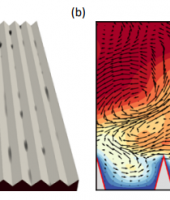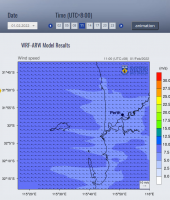Convective-Reactive Nuclear Burning and Turbulence Boundaries in Stars
This Project aims to provide advances in our understanding of how stars evolve and where the elements in the periodic table come from.
Area of science

Systems used
Magnus, Zeus and Visualisation
Applications used
Visit and own codesThe Challenge
We will investigate two key uncertainties in stellar modelling: (i) the spectacular but poorly understood nuclear-burning events that occur in stars: the so-called “Convective-reactive” events, and (ii) the age-old problem of determining the location of turbulence boundaries inside stars.
The Solution
To achieve these goals we are calculating large-scale 3D fluid-dynamics simulations of the interiors of stars. The simulations also include nuclear burning. By analysing these simulations we aim to understand the highly complex inner workings of stars, in particular the role of turbulence, and how it interacts with stable layers, and also with the nuclear burning.
The Outcome
The new models will allow the accurate prediction of the chemical production of convective-reactive events, creating new knowledge about which stars produce which elements. This will have impact because this information is crucial for deciphering the history of the Milky Way and other galaxies. The location of the boundaries of turbulent convection have fundamental effects on a star’s evolution, including affecting their lifetimes and chemical yields. Given that almost all stars have convective boundaries, this theoretical advance will have an impact across the whole mass range of stars. Stellar models provide the theoretical ‘backbone’ for a broad sections of astrophysics, so these fundamental advances will have a wide-reaching impact. This would not be possible without the compute power of the Pawsey supercomputers.
List of Publications
Turbulent Mixing and Nuclear Burning in Stellar Interiors
Mocák, M., Meakin, C., Campbell, S.W., Arnett, D.
2018, MNRAS, 481, 2918
https://ui.adsabs.harvard.edu/abs/2018MNRAS.481.2918M/abstract
3D Simulations and MLT: I. Renzini’s Critique
Arnett, W.D., Meakin, C., Hirschi, R., Cristini, A., Georgy, C., Campbell, S.W., Scott, L., Etienne, K., Viallet, M., Mocák, M.
2019, ApJ, 882, 18
https://ui.adsabs.harvard.edu/abs/2019ApJ…882…18A/abstract

Figure 1. Density perturbation about local density (in percentage). A controlled box-in-star simulation of stellar-like conditions, used to explore turbuence and its effects, particularly on entrainment of material from the upper coundary of turbulence. Gravity waves can be seen in the stable region above, these are now detectable in some stars using space-based asteroseismic observations.

Figure 2. Same as Figure 1 except lower resolution and velocity magnitude is plotted. This image is taken early in the simulation, as turbulence is just starting up.







